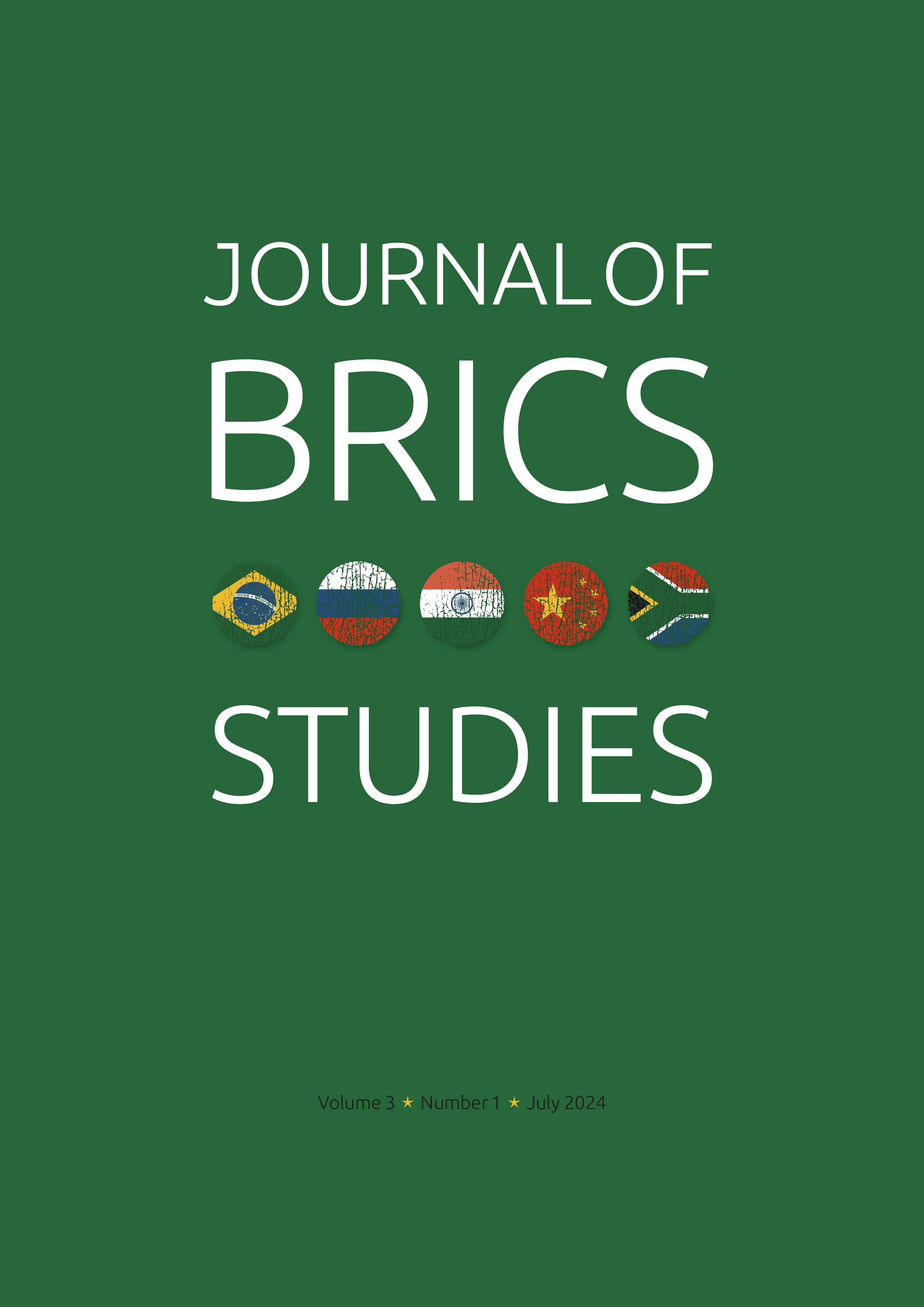The Multilateral Integration of Blockchain, Ethical Packet Sniffing and AI for Cybersecurity in BRICS Countries
Main Article Content
Keywords
Artificial intelligence, Blockchain technology, Packet sniffing, Cybersecurity
Abstract
This policy brief proposes that the BRICS (Brazil, Russia, India and South Africa) should plan and coordinate on ways to mitigate cybersecurity risks on a multilateral level. The BRICS countries are ideal for such a meta-governance mechanism which could coordinate toward the circumvention of some cyber risks. This Policy brief proposes that there should be an integration of blockchain technologies, packet sniffing technologies and AI detection tools to help mitigate emerging cybersecurity risks. The policy brief outlines the risks and challenges prevalent in this current climate, whilst also proposing potential remedies sourced from rigorous academic studies. The precise amendments include the synthesised mechanism of blockchain-based internet registries, packet sniffing technologies AI verification tools and capacity building to aid in the mitigation of cybersecurity risks. In 2007, a cyber-attack in Brazil plunged more than 3 million people into darkness. Cyberattacks collectively cost the BRICS countries $50.3bn in 2013. These funds could have been reinvested into the economy. BRICS needs the rapid technological integration of cyber-crime mitigation tools, tools which this policy brief will outline.
Article Metrics Graph
References
Norton. 2013. Norton Report 2013. Accessed at: 2013 Norton Report | NortonLifeLock. Date (Accessed 2023/05/14)
The Guardian. 2022. Hacker Claims to Have Obtained Data on 1 Billion Chinese Citizens., 4 July 2022. [Online]. Available at: https://www.theguardian.com/technology/2022/jul/04/hacker-claims-access-data-billion-chinese-citizens [Accessed 2023/05/14].
Business Day. 2022. ‘ChinaDan’ offers Hacked Police Records on Chinese Citizens for 10 Bitcoin., 6 July 2022. [Online]. Available at: https://www.businesslive.co.za/bd/world/asia/2022-07-06-chinadan-offers-hacked-police-records-on-chinese-citizens-for-10-bitcoin/
INTERPOL (2021) Interpol. 2021. INTERPOL report identifies top cyberthreats for Africa. Accessed from: https://www.interpol.int/en/News-and-Events/News/2021/INTERPOL-report-identifies-top-cyberthreats-in Africa#:~:text=The%20INTERPOL%20report%20identifies%20the%20most%20prominent%20threats,trick%20individuals%20into%20revealing%20personal%20or%20financial%20information%3B
World Economic Forum. 2019. This Is the Crippling Cost of Cybercrime on Corporations. Accessed at: This is the true cost of cybercrime, according to experts | World Economic Forum (weforum.org)
Albahar, M. 2019. Cyber attacks and terrorism: A twenty-first century conundrum. Science and engineering ethics, (25): 993-1006. https://doi.org/10.1007/s11948-016-9864-0
Nguyen, D. 2015. State sponsored cyber hacking and espionage. Infosec Writers.[online] Available at: State Sponsored Cyber Hacking and Espionage (infosecwriters.com)
Akoto, W. 2021. International trade and cyber conflict: Decomposing the effect of trade on state-sponsored cyber attacks. Journal of Peace Research, 58(5):1083-1097. https://doi.org/10.1177/0022343320964549
Zeng, C. and Olivera-Cintrón, R. 2019. Preparing for the world of a perfect deepfake. Dostopno na: https://czeng. org/classes/6805/Final. pdf (18. 6. 2020).
Taylor, P.J., Dargahi, T., Dehghantanha, A., Parizi, R.M. and Choo, K.K.R. 2020. A systematic literature review of blockchain cyber security. Digital Communications and Networks, 6(2):147-156. https://doi.org/10.1016/j.dcan.2019.01.005
Yu, P., Xia, Z., Fei, J. and Lu, Y., 2021. A survey on deepfake video detection. Iet Biometrics, 10(6), pp.607-624. https://doi.org/10.1049/bme2.12031
Ensafi, R., Fifield, D., Winter, P., Feamster, N., Weaver, N. and Paxson, V. 2015, October. Examining how the great firewall discovers hidden circumvention servers. In Proceedings of the 2015 Internet Measurement Conference. (2015): 445-458. https://doi.org/10.1145/2815675.2815690
Patil, S., Jangra, A., Bhale, M., Raina, A. and Kulkarni, P. 2017, September. Ethical hacking: The need for cyber security. In 2017 IEEE International Conference on Power, Control, Signals and Instrumentation Engineering (ICPCSI):1602-1606. https://doi.org/10.1109/ICPCSI.2017.8391982
Palmer, C.C. 2001. Ethical hacking. IBM Systems Journal, 40(3):769-780. https://doi.org/10.1147/sj.403.0769
Sayeed, S. and Marco-Gisbert, H. 2019. Assessing blockchain consensus and security mechanisms against the 51% attack. Applied sciences, 9(9): 1788. https://doi.org/10.3390/app9091788
Eyal, I. and Sirer, E.G. 2018. Majority is not enough: Bitcoin mining is vulnerable. Communications of the ACM, 61(7): 95-102. https://doi.org/10.1145/3212998
Yeboah-Boateng, E.O. and Amanor, P.M., 2014. Phishing, SMiShing & Vishing: an assessment of threats against mobile devices. Journal of Emerging Trends in Computing and Information Sciences, 5(4):297-307.
Aldawood, H. and Skinner, G., 2019. Reviewing cyber security social engineering training and awareness programs—Pitfalls and ongoing issues. Future Internet, 11(3):73. https://doi.org/10.3390/fi11030073
Kawaguchi, Y., Yamada, A. and Ozawa, S., 2017. Ai web-contents analyzer for monitoring underground marketplace. In Neural Information Processing: 24th International Conference, ICONIP 2017, Guangzhou, China, November 14–18, 2017, Proceedings, Part V 24 (pp. 888-896). Springer International Publishing. https://doi.org/10.1007/978-3-319-70139-4_90


